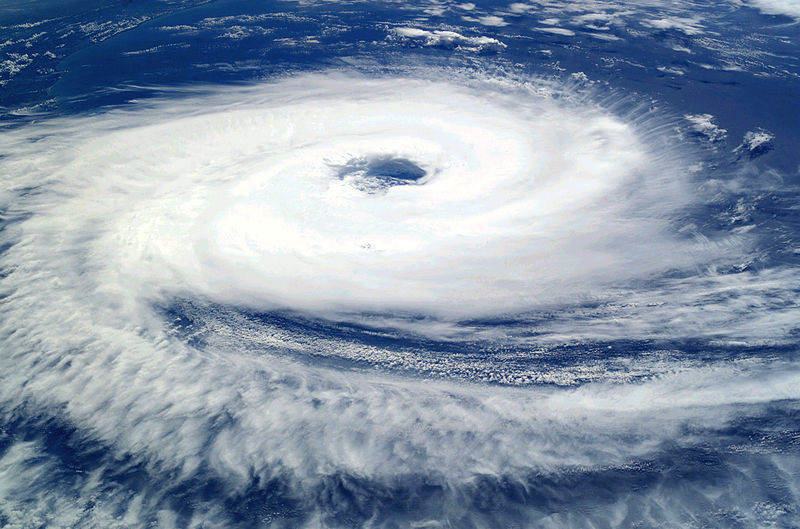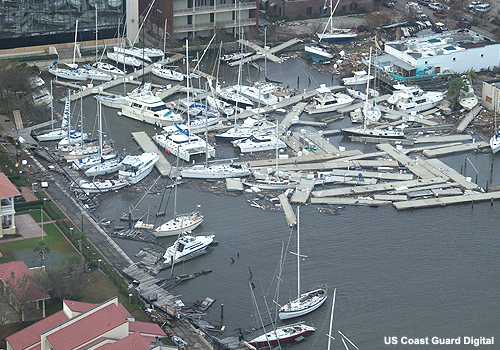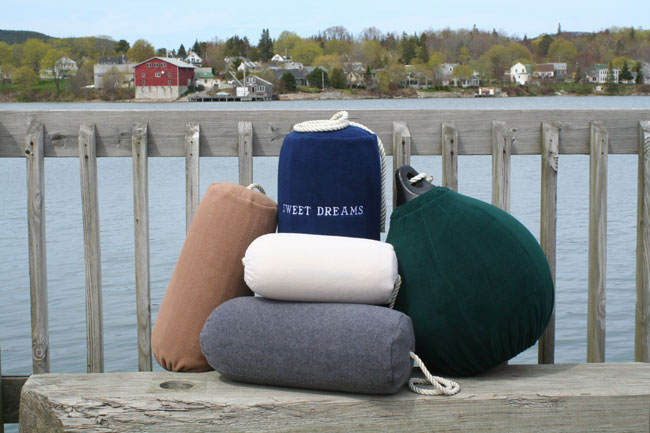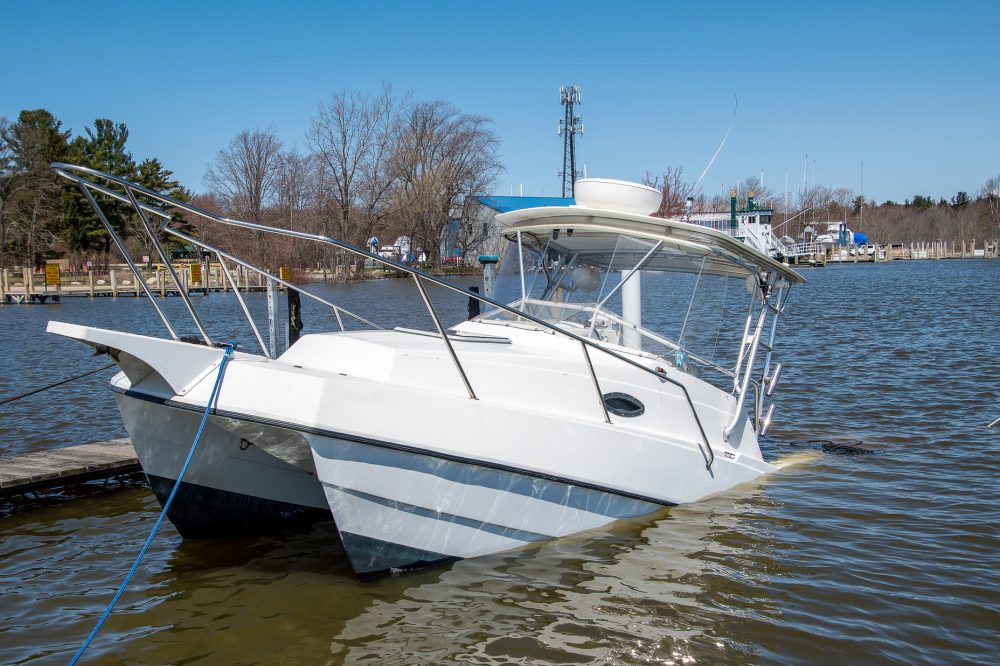Essential Hurricane Prep For Boat Owners
Learn essential hurricane prep tips for boat owners, from securing your vessel at the marina to storm-proofing gear and ensuring safety.
The hurricane season introduces a distinct array of threats and obstacles for those who own boats, and hurricane prep is essential. These powerful natural events can cause extensive damage and even destroy boats if owners aren't vigilant and prepared. However, numerous measures can be taken to safeguard vessels from harm. Our aim is for both you and your boat to navigate the season unscathed—here are our tips for preparation and safety as a hurricane approaches.
- Determine the Best Location for Your Boat
- Scout the Area and Note Other Boats
- Have a Backup Plan
- Prep Gear and Insurance Information
- Remove, Secure, and Reduce Windage
- Adjust Lines and Rigging
- Account for Storm Surge
- Employ Chaffing Gear
- Electronics Check
- Things to Avoid

Determine the Best Location for Your Boat During Hurricane Prep
When preparing for a hurricane, the primary consideration is the location of your boat and its safety in that spot. Assess how shielded your boat is from wind, waves, and storm surges, whether it's docked or ashore. Make sure your boat isn't situated beneath any tree branches or loose objects that might be hurled onto it. If your boat is at a marina, review their protocols and inspect the conditions it will be subjected to, in order to decide whether it should remain in the water. If you're considering using a mooring, evaluate its strength and reliability. While moorings reduce windage because boats can pivot with the wind, intense gusts may still dislodge them.
Scout the Area and Note Other Boats
Observe the congestion of your marina or boatyard, and inspect nearby boats to gauge their level of preparation. The readiness of neighboring vessels can impact your own boat protection measures. Frequently, individuals who have meticulously readied their boats for storms find their efforts compromised by unsecured boats from others. These drifting vessels can sever mooring lines, unsettle anchors, tear out cleats, and inflict hull damage, leading to even more significant losses.
Likewise, learn if your marina, boatyard, or harbormaster has a plan in place to safeguard the boats, or if it's every boat for themselves. If you decide to keep your boat on land, determine how far the storm surge is likely to reach and move your boat outside that zone. There have been cases when boats hauled out in advance of a storm have then floated off their stands and been damaged in the boatyard.
Have a Backup Plan

Best practice is generally going to be hauling your boat as part of your hurricane prep. It cuts down the possible unexpected factors that could damage your boat, and it is less likely to be swept away. If this isn’t possible or advisable in your case, have a backup plan on where your boat will go in case of a hurricane. Identify hurricane holes, alternative marinas, and safe-harbor areas where you’d be able to get your boat. Having a short list of options will cut down on valuable decision-making time when a storm does arise.
Hurricane Prep Gear and Insurance Information
Similarly, you can prep gear ahead of time: all lifejackets and valuable equipment that could float away should be labeled with names and phone numbers. Gather and photograph all of your on-board physical records (like the insurance) and have recent photos of your boat and its Hull Identification Number. You should also ensure your insurance is up to date and see what it covers for hurricanes.
Remove, Secure, and Reduce Windage

As part of your hurricane prep, you’ll also need to remove items from your boat that could blow away or cause damage to the boat if left onboard. All boats with canvas should have it stripped to reduce windage. Simply folding down the bimini isn’t enough— when the wind gets up above 60 knots or so, it seeks out even the smallest weakness in canvas, exploits it, and almost methodically goes on to destroy the whole cloth structure and usually any metal framework holding it together, inevitably putting enormous stress on the whole boat. Dodgers, awnings, mainsails, roller-furled jibs, and any other fabric onboard is a risk factor.
Anything else unsecured should be removed or locked down, too. Fishing rods, tackle boxes, throw cushions, your medical kit, flags, grills, cushions, and water toys should come off the boat. Items that can be secured in a cabin with a door sure not to blow open can be moved there, but it’s best to take them off the boat. Anything that can’t be removed, like tillers and the boom on a sailboat, should be locked down to prevent movement. Additionally, secure your hatches, ports, cockpit lockers, bow and stern lockers, and anchor locker. Any areas that are prone to leaks may be taped over, as should places with slats (like the engine vent).
Adjust Lines and Rigging
If your boat is riding out the storm in the water, as part of your hurricane prep, you’ll need to adjust lines and rigging to keep it in place. Boats left on a mooring or at anchor should have doubled or tripled attachment points, spreading the loads between two or more cleats, using a bridle if necessary, to make attachments to through-bolted fittings, around masts at their partners, through bow-eyes, and other sturdy locations. Whenever possible, tie to heavy fixed objects on the land-side – bollards, pilings – and remember to allow slack for the maximum expected storm surge. Leaving your boat at anchor? Use two or more large anchors depending on the size of your boat to keep it in place. If your boat is staying on a trailer, it should be lashed to the trailer, with tires slightly deflated and blocks placed around wheels to take on additional weight and prevent movement.
The type of line you choose for this endeavor matters, as you’ll need to account for more stress than normal. Dacron and polyester lines resist chafe better than nylon and have a higher breaking strength. Nylon is stretchier. Use polyester for bow and stern lines, nylon for spring lines and anchor rope.
Account for Storm Surge
Always attach lines high up on pilings to account for storm surge. Too little rope, and your rigging may break or cause damage to the boat. In the slip, use spring lines to pull your boat away from the dock, and work with the yard management and your neighbors to set up grids of lines that will help keep boats away from surging finger piers and neighbors.
Employ Chaffing Gear

You should also employ chaffing gear at this stage of storm prep. Any place a mooring line or anchor rode runs through a chock or fairlead, or over a roller will require chaffing gear. Traditional leather or heavy cloth chaffing gear works very well, although there is some debate regarding if hard rubber or reinforced water hose work better. In a pinch, any type of natural cloth works. Finally, hang fenders everywhere you can.
The Final Electronics Check
At this stage, you’ll also want to ensure your boat’s automatic bilge is functioning and the battery is charged to keep it going. Depending on the expected duration of the storm, you may want to have a backup battery ready. Before you step off for the final time, disconnect all electronics aside from the bilge and take photos of your work for potential insurance needs.
Things to Avoid
We’ve given you some steps you can take to protect your boat in case of a hurricane, but there are also some things to avoid for your safety and the boats. First and foremost, refrain from spending the hurricane aboard your boat. Ultimately, there’s not a whole lot you can do once the storm hits. Staying aboard will seriously compromise your safety, and no matter how much we love our boats, it isn’t worth the risk! If your boat is in the water or on land, avoid tying your boat to a tree or other object that may fall onto it, and position the boat away from any branches. Likewise, next to a house isn’t a great spot to leave boats during a hurricane— boats are generally lighter than cars and thus more prone to being blown over. If possible, move them inside a garage or away from any structures.
You also should consider moving your boat if it’s on a lift, davit, or storage rack. Lifts and davits may swing or break, and boats may rub against surrounding structures. Similarly, while storage rack tech has come a long way in recent years, boats kept on older racks may be better off moved to an alternative location.

While hurricanes and other natural disasters always bring along the unexpected, there are some things we can prepare for. Utilize these prep tips to keep yourself and your boat safe when a hurricane is coming. Have an outboard motor? Learn how to pickle an outboard in case it gets swamped in the storm.
Editor's Note: This article was last updated in October, 2024 for the 2024 hurricane season.












